Danger, danger! The most dangerous sports in the world
Culture

High-altitude climbing
What does cave diving have to do with street luging? They are both very dangerous for very different reasons. Danger comes in many shapes, sizes, and forms, and when it arrives, the consequences can be severe, ranging from broken bones to death.
Here are the most dangerous sports on earth, from bull riding to MMA and everything in between.
Climbing at high altitudes has an endless list of perils. There’s the lack of oxygen at extreme heights that causes the body’s cells to die off, which in turn causes the climber to rapidly lose energy; there are extreme, unpredictable changes in the weather that leave hikers with near-zero visibility conditions; gusts of wind can reach up to 175 mph at the summit of Mt. Everest and storms can set in in a moment’s notice.

Phunjo Lama/ Getty Images
With relative overcrowding at the top of the world’s highest peaks, the journey to the top has become even more treacherous. In 2019 alone, 11 climbers have died attempting to summit Everest. Simply put, going to extremes, whether it be highs or lows, is not for the faint of heart.
Cliff diving
She looks awfully calm for being in an inverted position potentially over a hundred feet above the water with not much margin for error. Cliff diving, as an amateur sport, is all fun and games. The real dangers behind the sport begin when divers begin jumping off massive cliffs or platforms while doing flips, twists, and spins.
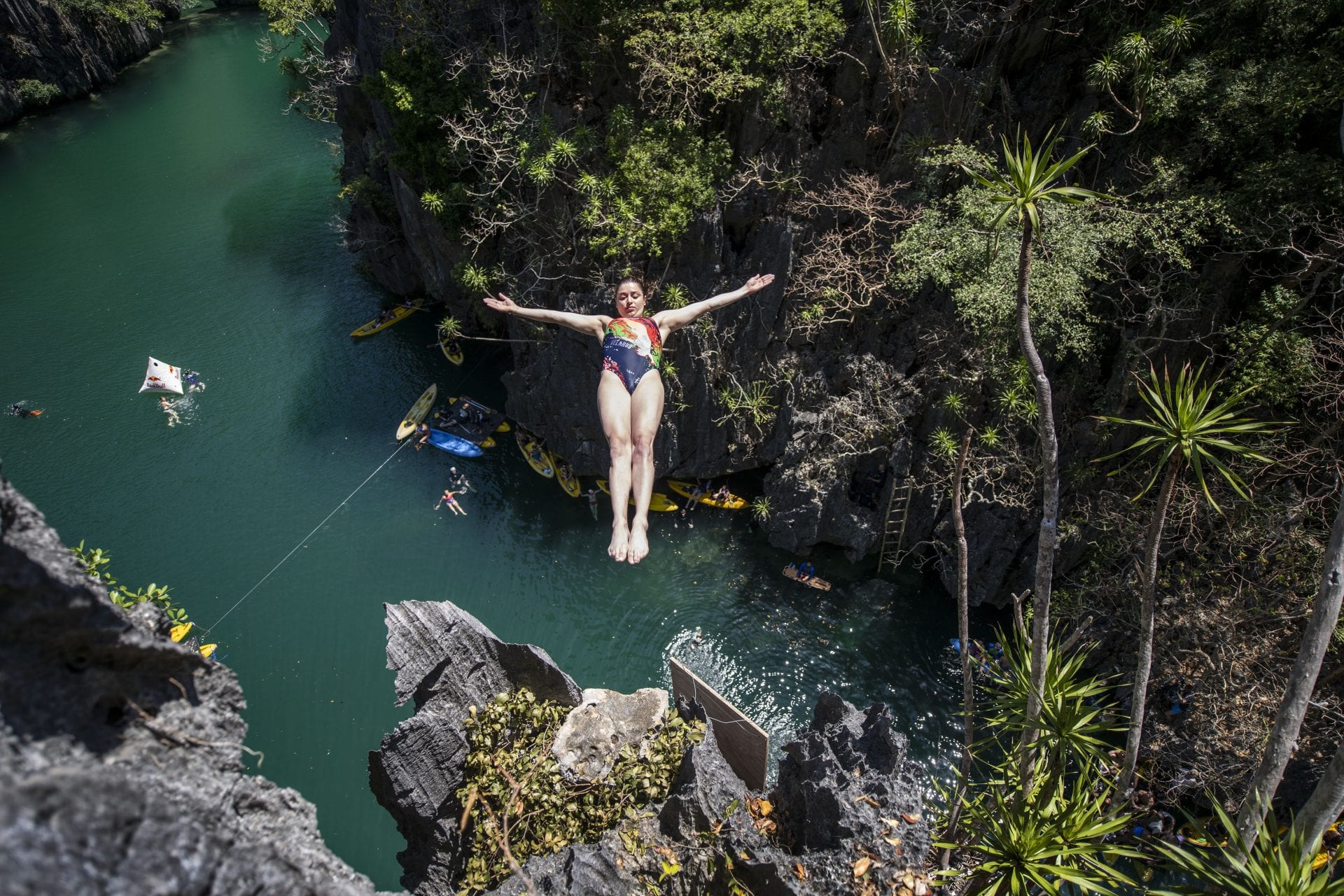
Handout/ Getty Images
Any error at that height could be fatal, from landing in the water wrong to not clearing the cliff. And if a diver that messes up is lucky enough to avoid death, there is a very high chance said diver will not be lucky enough to avoid other gruesome injuries, such as broken bones, punctured lungs, internal bleeding, ruptured eardrums, and concussions.
BASE jumping
Looks safe right? Just casually getting chucked off a skyscraper by some friends. “See you down below duuuuuuuuuuude.” Those could have been her last words before she hopefully landed safely. BASE, an acronym that stands for four certain objects one can jump off (building, antenna, span, and earth), is essentially the art of jumping off fixed objects and almost immediately opening your parachute in hopes of a smooth landing below.
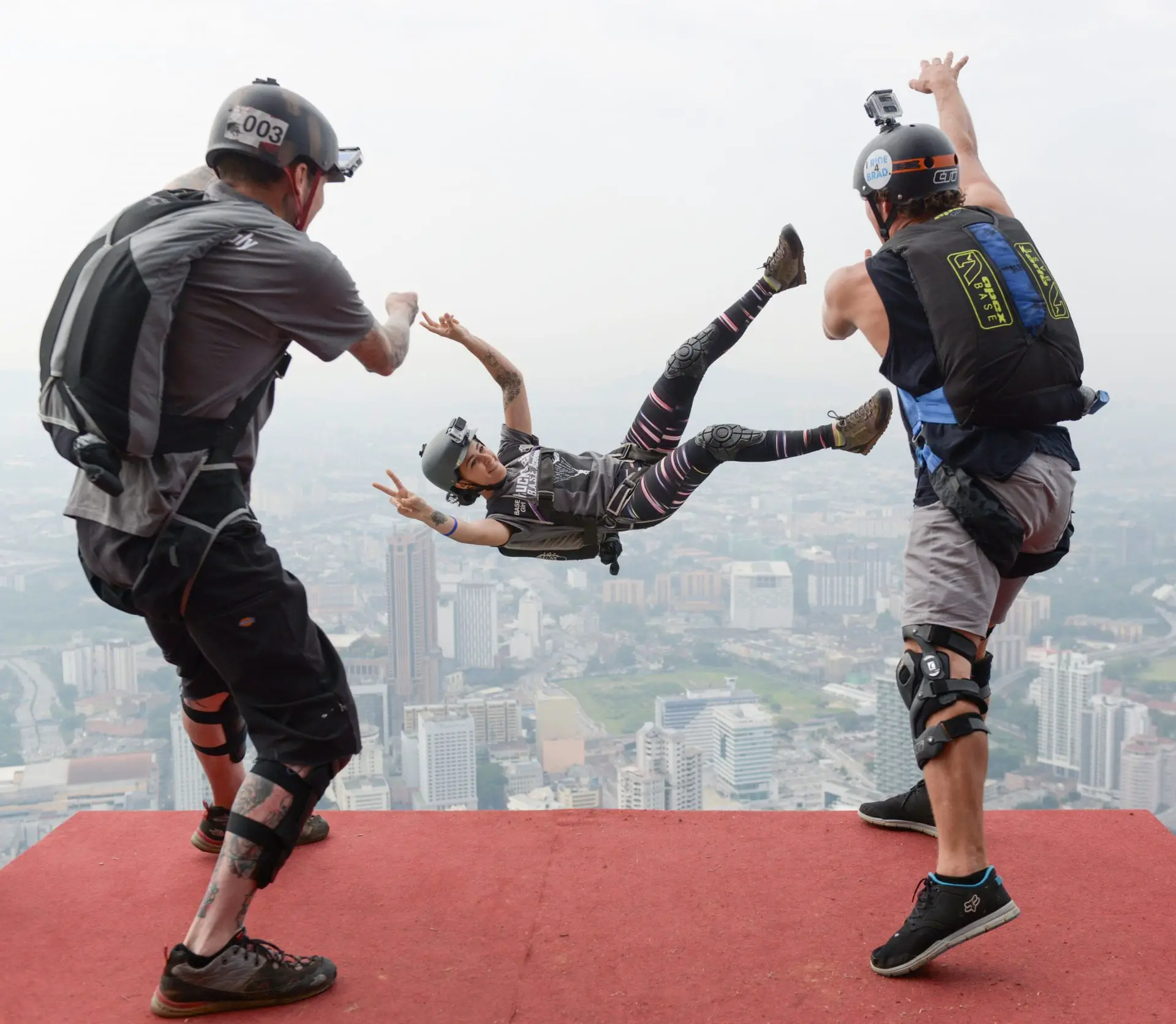
Mohd Rasfan/ Getty Images
The sport, whose legality varies by country, is one of the most deadly in the world, and if you think about it, it makes sense. There are really just two options with BASE jumping: live or die. And that near absolute truth begs the question, why are these BASE jumpers wearing kneepads? If the parachute doesn’t save you, you can bet the barn knee pads won’t either.
Jousting
There’s a reason this sport largely died hundreds and hundreds of years ago: it’s really f’ing dangerous, and the sole intent of the sport is to maim or kill your opponent. Ok, that might have been a slight exaggeration, as jousting was a sport held at tournaments where the intent wasn’t to kill your oppent but rather knock them off their horse and into the dirt.

Peter Trimming / Jousting at Hever Castle, Kent (5)
That being said, horses traveling at full speed with knights holding heavy lances meant for some pretty nasty collisions where one’s pride wasn’t the only thing to suffer. Should a knight receive a direct blow from a lance, the force could easily kill them or do permanent damage.
Luge
One of the most thrilling winter Olympic sports, luge is the speed demon of the games, and with all of that speed, luge is also one of the game’s most dangerous sports. The principle of luge is simple: lie on a metal sled while hurtling down an ice-covered course replete with steep banks, windy turns, and serious drops. Lugers can reach top speeds nearing 100 mph, all while doing so on an object that doesn’t have any brakes.
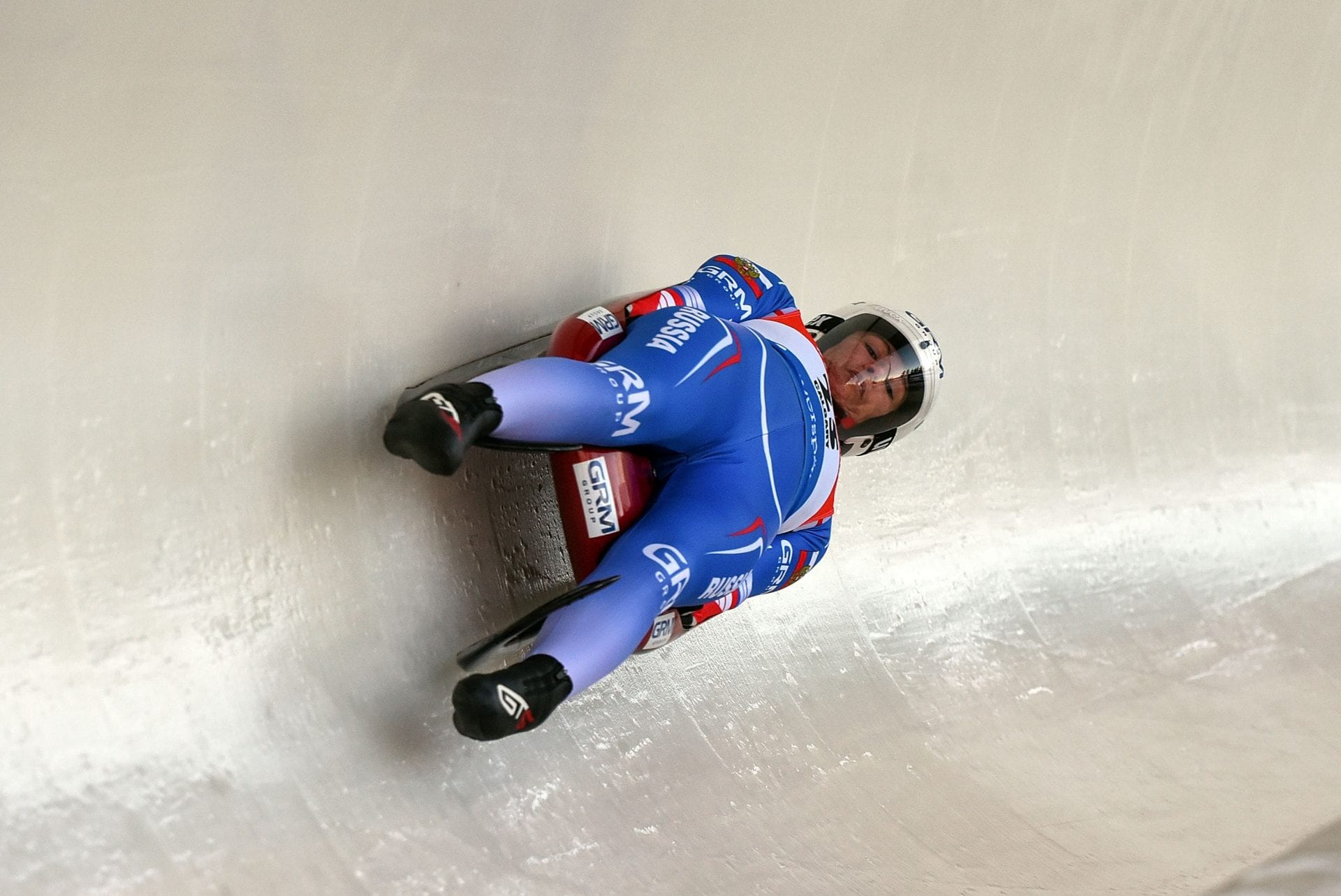
Icon Sportswire/ Getty Images
For protection, drivers where a helmet with a faceguard. In the case of a crash, the outcome is usually severe. Sometimes it’s lethal. Prior to the 2010 Winter Olympics in Vancouver, Georgian luger Nodar Kumaritashvili suffered a fatal crash during a practice run, reminding everyone just how dangerous the sport is. The line between needing enough speed to win and staying safe is ever so thin.
Pole vault
From an outsider’s view, pole vaulting is one of the most fascinating, graceful events in track and field. But zoom a little closer and you will notice how perilous the sport can be. In essence, pole vaulters willingly launch themselves nearly 20 feet in the air while trying to clear a bar at a predetermined height. While that may seem fairly safe, nearly every act of the vault is dangerous.

Michael Steele/ Getty Images
The lead up to the vault puts immense amounts of tension on the pole which can lead to violent breaks, which in turn can send shards flying through the air and the vaulter crashing to the ground. In the air, the vaulter must have near-perfect body control lest he/she lands in a compromising position that could snap one’s bones in an instant.
Iditarod
Does a 938-mile race through Alaska in the winter sound safe? Does being all alone, except for the 14 dogs you call your team, in weather that can reach minus 100 F (with wind chill) sound like a tame sport? No. The Iditarod is not a recreational activity; it’s a life or death survival race to earn the title of greatest dog musher in the world.
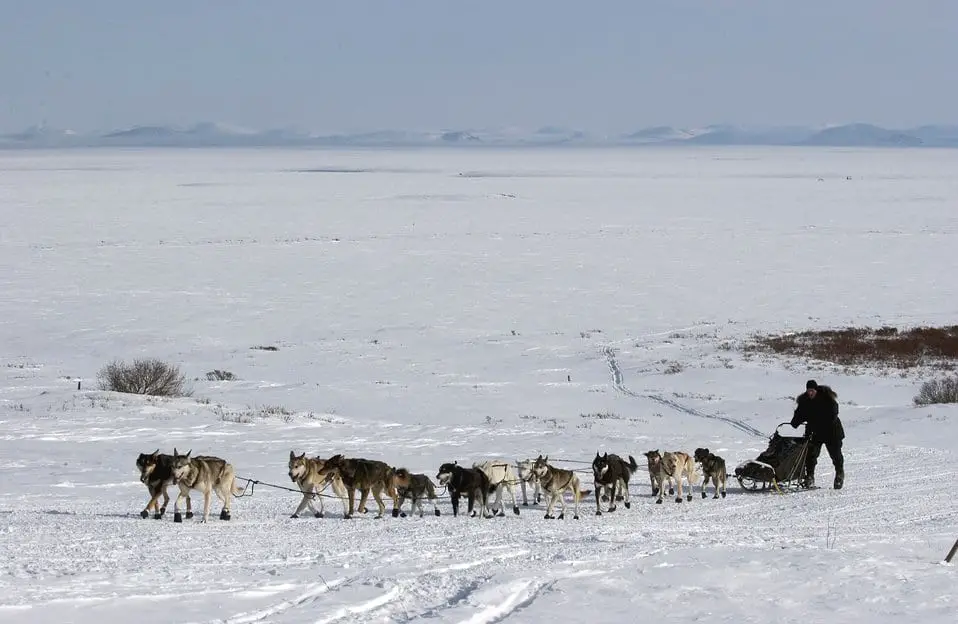
U.S. Air Force photo/Tech. Sgt. Keith Brown
Gale force-winds, white-out conditions, extreme cold, hypothermia, frostbite, and delusion are just a few of the conditions and symptoms mushers and their pups face on the grueling race that can last anywhere from eight days to 15 days or more. Despite the fact that no musher has died on the remote course, the Iditarod remains one of the foremost tests of strength, endurance, technical skill, and survival.
Helicopter skiing
Another snow sport that makes the list, heli-skiing is dangerous for a variety of reasons, none more paramount than extreme terrain these adrenaline junky skiers subject themselves to. Never mind the sheer isolation that comes with heli-skiing. That part, the isolation and inability to get help should you need it, is a relatively trivial detail of this sport.
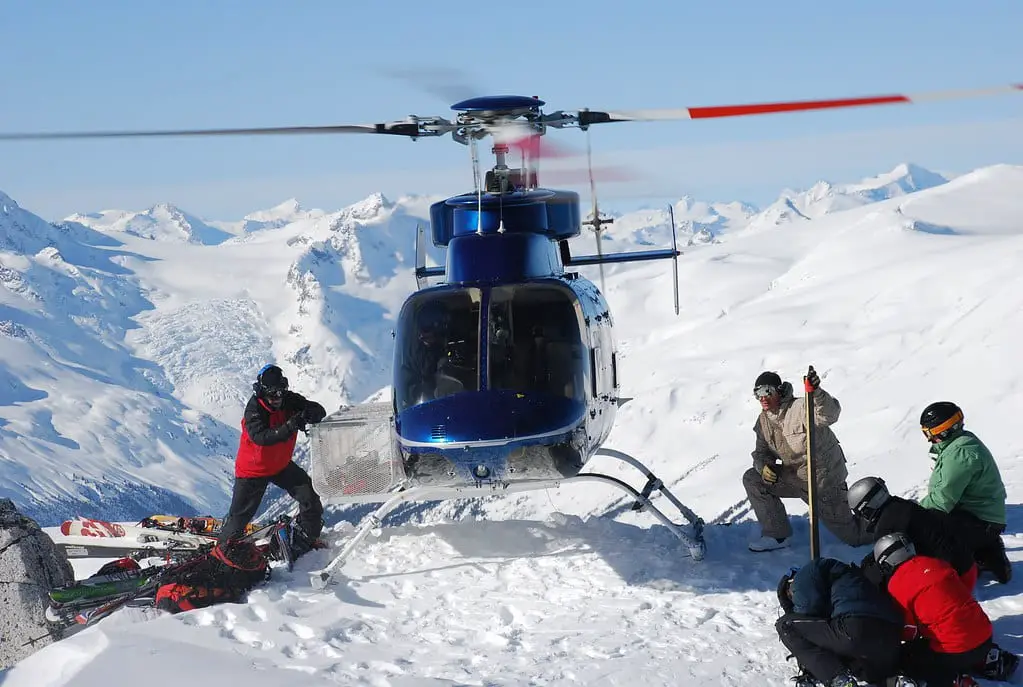
Roderick Eime
Being miles and miles and miles away from any semblance of civilization isn’t something that these skiers and boarders are afraid of. The real pitfalls of heli-skiing are the avalanches, injuries, and volatile weather that can transform perfect conditions to completely unsafe in a matter of minutes.
Cave diving
The name says it all, and you should be able to connect the dots as to why cave diving is such a high-risk activity. Diving as a stand-alone sport comes with many risks, especially as the depth of the dive increases. Now factor in narrow areas, total darkness, and no clear route to the top surface. That is cave diving in a nutshell.

Pixabay
Divers have to be aware of a myriad of factors when submerging themselves below the surface and into a cave. Some common practices of cave diving include carrying extra light sources, following a tether or guide back to the cave’s exit, moving in such a way as to not disturb the silt (which, if disturbed, reduces visibility to zero), decompression, and having expert ability to manage one’s gas supply.
Rock climbing
Deaths in rock climbing are not too common, but injuries certainly are. Let’s see, we have climbing up sheer rocks full of jagged, sharp, and hard surfaces. We have minimal protection and lots of trust based on a few things, namely your rope and belay partner (the person who controls the rope you are tied to).
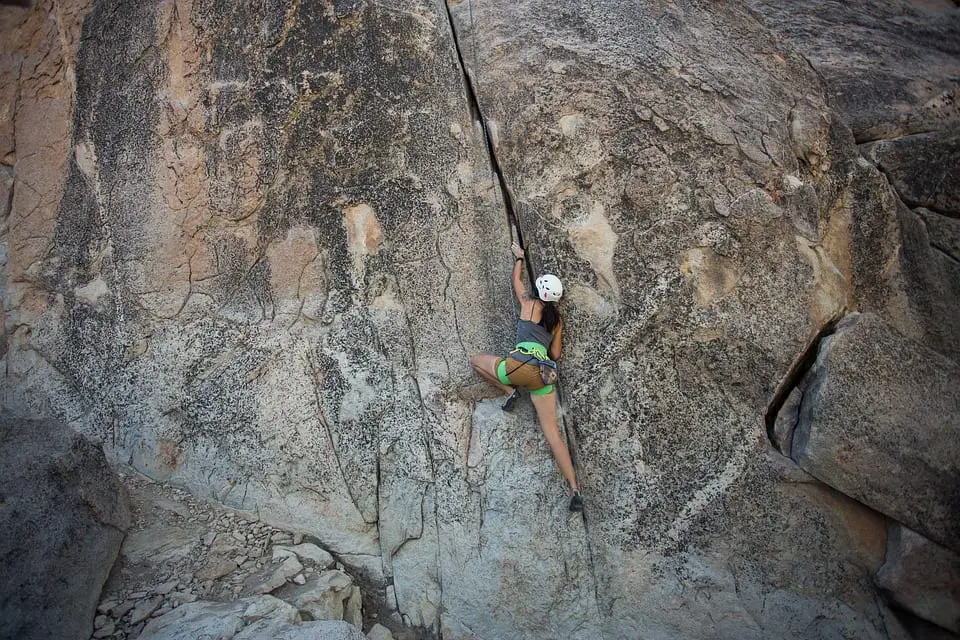
Pixabay
And we have those crazy climbers, called free soloists, who prefer to not use any rope. All of these elements mean climbing, when something goes wrong, can be very dangerous. Breaks and sprains are the most common injuries. Head injuries, should the climber get spun upside down on their fall, are also fairly common. For our readers that aren’t too squeamish, check out this insane climber, Alex Honnold.
Big wave surfing
Surfing’s like the chillest sport ever brah, until you take a gnarly wipeout and get pushed to the bottom of the ocean’s floor. Big wave surfers are riding behemoths of waves often measuring anywhere from 50 to 80 feet. And it’s all fun and games until you slip off the board. At that point, all bets are off the table as the untameable wave you were once riding is now pinning you underwater, sometimes 50 feet below the surface.
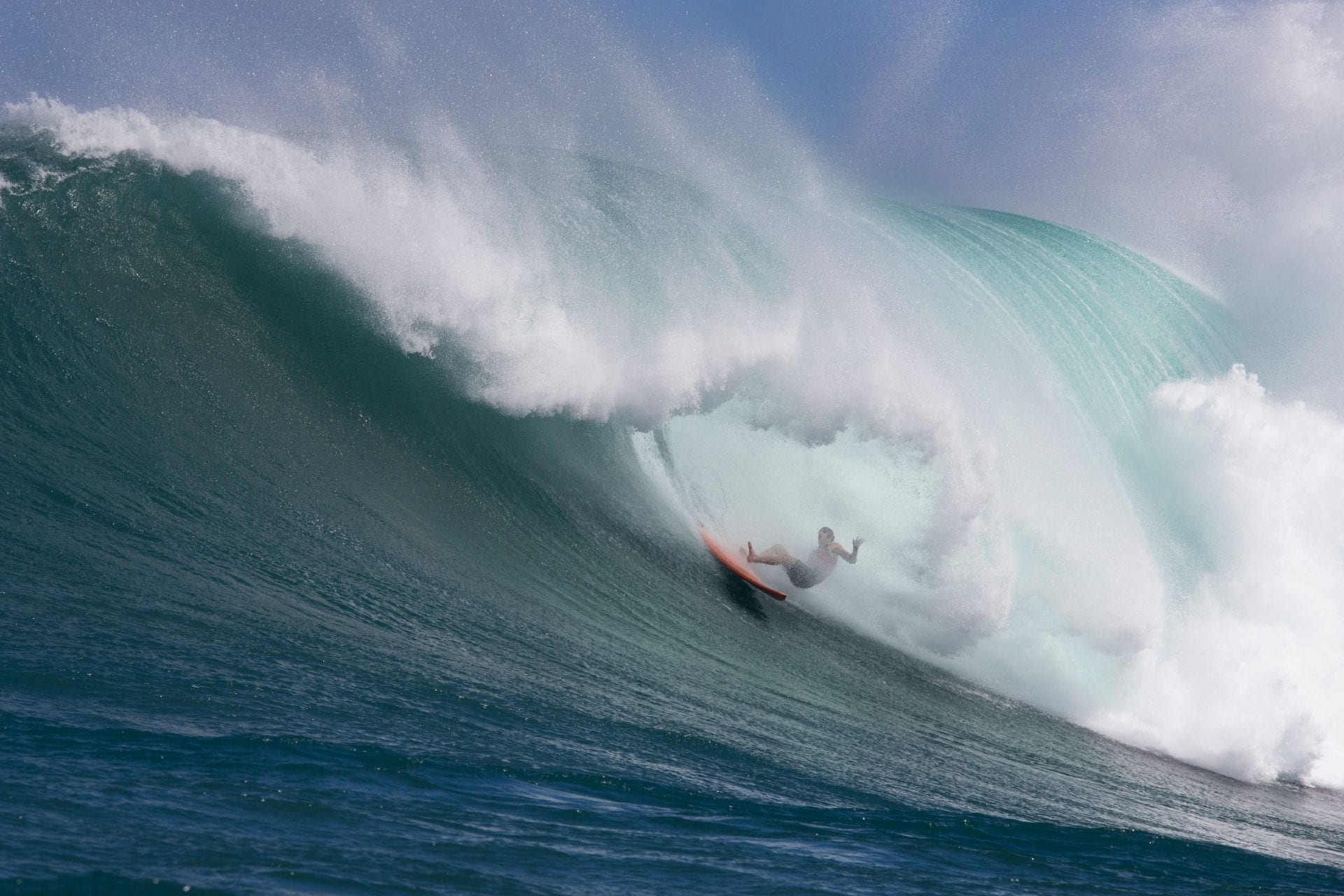
Brian Bielmann/ Getty Images
At that moment, surfers have little time to orient themselves and swim to the surface before the next wave comes in and hammers them back to the bottom. To be clear, the bottom of the ocean isn’t all peaches and cream, either. The bottom is rock hard, and slamming into it means broken bones, ruptured eardrums, and even death.
Downhill mountain biking
What do we have here? Trees, rocks, more trees, more rocks, and the element of speed and surprise. Downhill mountain biking is an all-in commitment that often leaves its participants battered, bruised, and broken. Let’s say you’re lucky enough to successfully navigate off the sharp and potentially slippery rock.

Paul Jerry
Then you have to avoid the trees that are not interested in avoiding you. After all of that is done, you need to watch out for hidden roots, gaps, stumps, and objects camouflaged on the trail. All of these dangers, combined with the speed these bikers are moving at, means collisions are highly probable (and severe).
Longboarding
Flying down a steep hill mere inches off the ground on a skateboard with no brakes seems like a surefire way to end up in the hospital- the second home of longboarders around the world. Longboarding is a variation of skateboarding that focuses on speed and carving rather than tricks and aerial stunts. Riders cling to specialized boards while zooming down paved roads that are usually (and hopefully) blocked off from traffic.
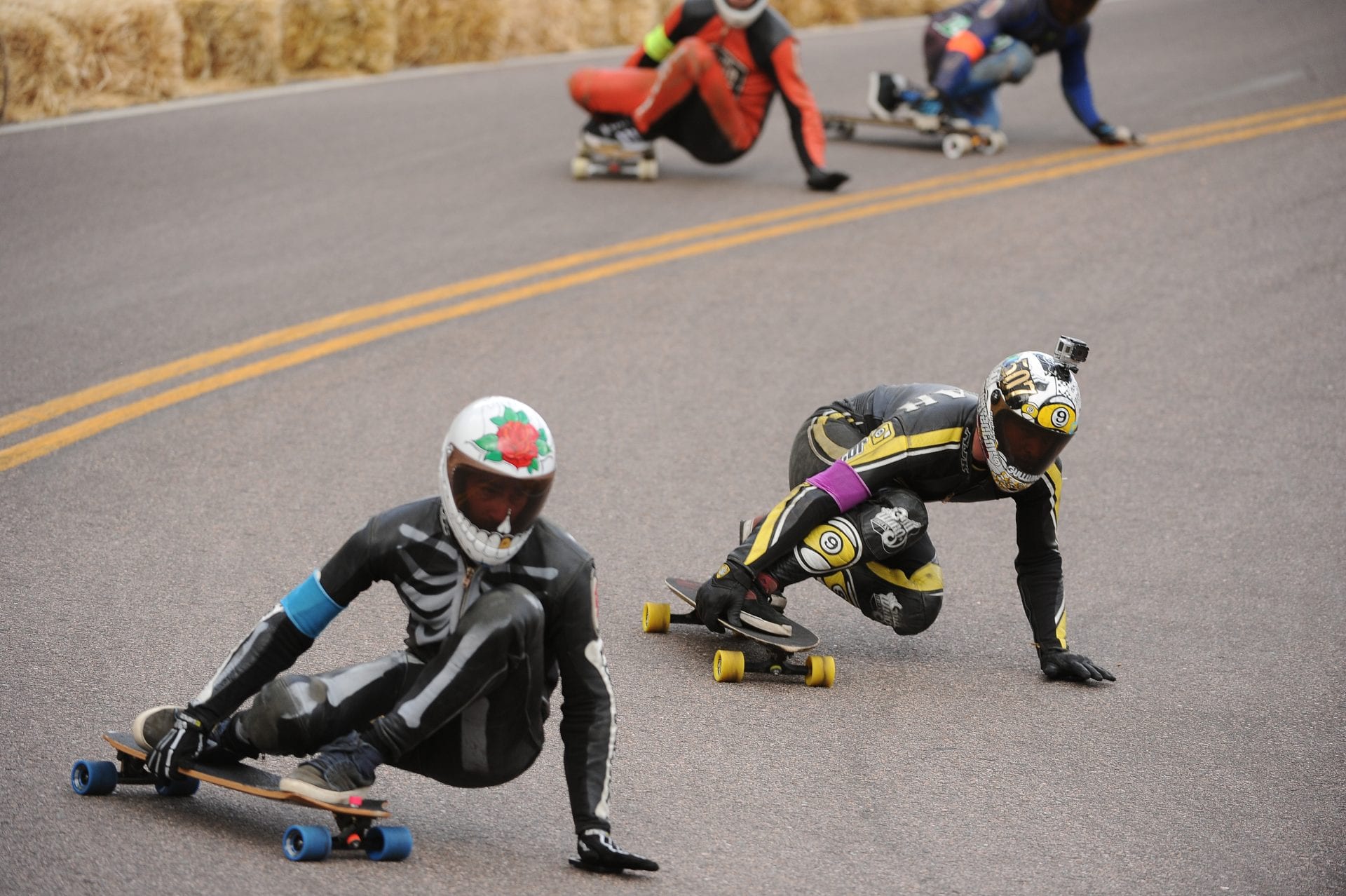
Helen H. Richardson/ Getty Images
The equipment these speed freaks have is minimal: helmet, gloves, knee pads, and some skate shoes. In some cases, riders will wear protective suits, like the ones pictured below. With speeds approaching 100 mph and no brakes, any tumble off the longboard could be devastating if not lethal.
Bull riding
Often referred to as “the most dangerous eight seconds in sports,” bull riding pairs an angry bull with a modern-day cowboy. The cowboy, prepared for the ride of his/her life, gets atop the bull and gives the nod to the rodeo clowns, signaling he/she is ready to ride. When the gate opens, all bets are off.

maxpixel.net
The ultimate goal is to stay atop the bull for eight seconds while maintaining proper form, that is not using your free hand for balance, either on yourself or on the bull. At the end of the day, pitting man versus beast is a surefire way to create drama, good television, and injury. Thankfully today, riders are wearing more and more pieces of protection equipment.
MMA
Look at the guy with the blue short’s leg muscles. He’s pretty strong. Now look where his powerful leg is. In the ribs of his opponent. And when he’s done kicking him in the ribs, he’s going to throw a flurry of punches that he hopes to land on his opponents face. MMA and its biggest professional league, UFC, is one of the fastest-growing sports on earth, and it’s also one of the most dangerous and violent.

Michael Owens/ Zuffa LLC/ Getty Images
Fighters are equipped with all the tools to pummel their opponents. Their arsenal of attacks include chokes, joint manipulations, and a variety of devastating strikes. All of this means that the risk for injury in the cage is high, with broken bones being the most common injury.
Rugby
To many Americans, rugby is football’s much more boring cousin. But to the rest of the world, rugby is one of the premier contact sports around. Rugby players hit like football players but without the pads. It’s a brutal sport that combines elements of wrestling, football, and hockey all into one vicious game.

NurPhoto/ Getty Images
Players wear minimal padding, like the padded helmet above, and are expected to do almost whatever it takes to bring the ball carrier to the ground. And often that ball carrier is a big, fast, and running straight at you with no intent to move. Common rugby injuries include broken bones, concussions, and lacerations.
Horse riding
This is a position she probably did not want to be in. This is a position that could end with a bunch of scary injuries involving the head and neck. Horseback riding may seem like a tame, elegant sport where riders in fancy outfits jaunt around atop expensive horses with no immediate goal in sight. However, much like any other sport involving animals, attempting to fully control and understand wild beasts is risky business.
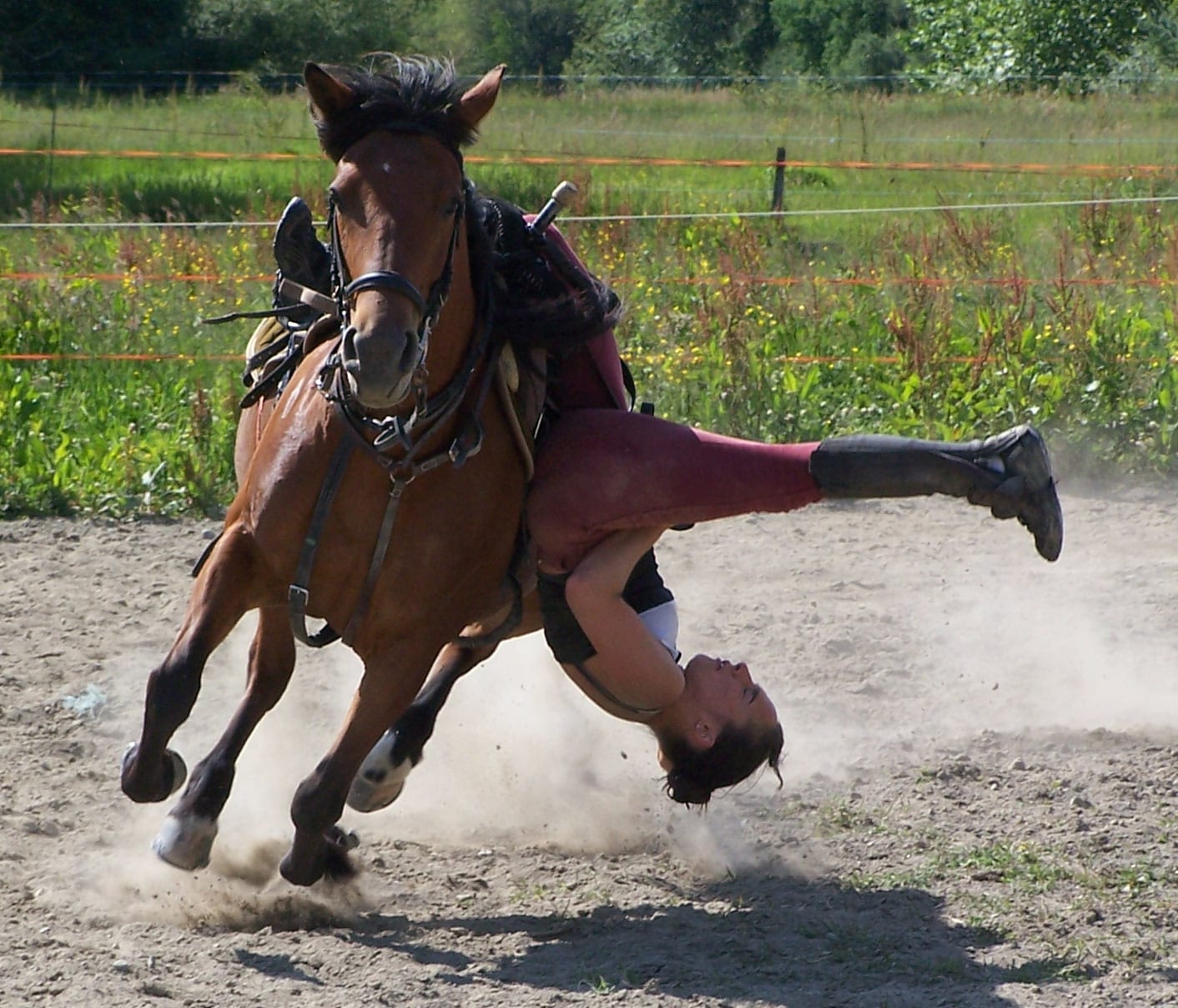
Wikimedia Commons
Although we may think of horses as tame, docile, and domesticated, they are anything but. Horses want to run, gallop, buck, and, generally, do as they please. And that can put the rider in a precarious position. Riders can get stomped, trampled, and violently thrown to the ground. Broken bones, punctured lungs, and head/neck injuries are, unfortunately, all too common in riding.
Running of the bulls
What do we have here? Another classic example of man versus nature, man versus beast. However, unlike horseback riding or bull riding, where the objective is more or less peaceful, the running of the bulls is a centuries-old tradition that can hardly be described as peaceful.
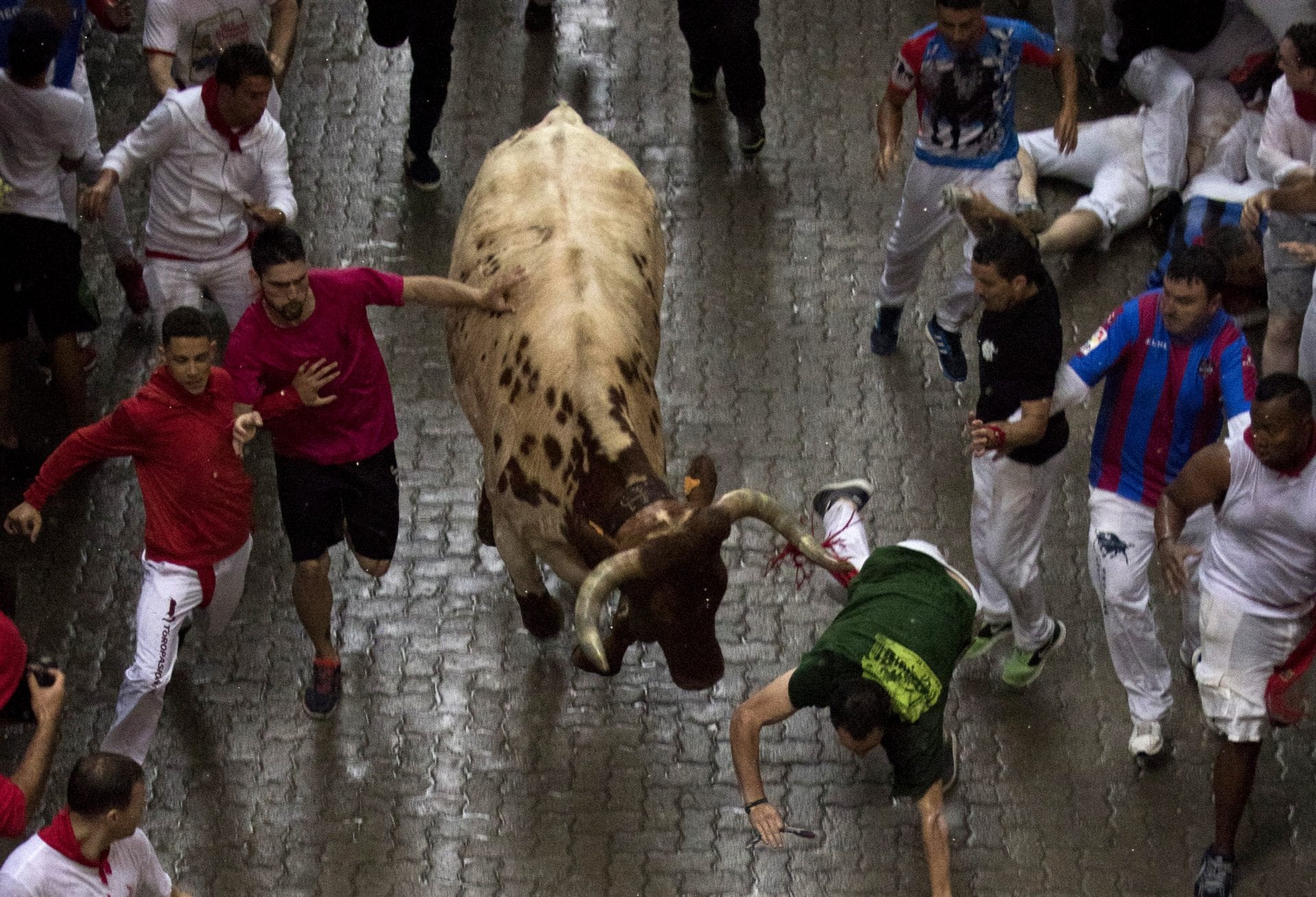
Jaime Reina/ Getty Images
Chaotic, dangerous, and, at times, violent are all better descriptions of the increasingly controversial event. The most famous event is held in Pamplona, Spain, and pits six uncastrated bulls against hundreds of runners navigating themselves through a few narrow streets. Every year, scores of people get injured via trampling, gorging, and falling, and since 1910, 15 people have been killed.
Gymnastics
When things go right, gymnastics can be one of the most beautiful sports to watch. When things go wrong, gymnastics can be one of the most gruesome sports to watch. The perils of gymnastics are magnified with skill and age, as competitors begin to execute more daring maneuvers from bigger heights.

Tim Clayton-Corbis/ Getty Images
Gymnasts are asked to land on a mat a mere 8 inches thick after performing dazzling, disorienting tricks like flips and twists. Should a gymnast land awkwardly, the consequences can be severe. Broken bones, dislocated joints, and scary head/neck injuries are, unfortunately, occurring with increasing frequency as the sport’s popularity burgeons.
Dare devil
The most legendary stuntman in history, Evel Knievel, broke a world-record 433 bones by the end of 1975. From 1966 to 1973, Knievel claimed to have spent more than half those years either in hospitals, wheelchairs, or on crutches. Now, not every stuntman/woman is as extreme as Knievel was, but that doesn’t make their chosen profession or hobby and less dangerous.

David Ashdown/ Getty Images
Stuntmen are daredevils, willing to risk life and limb to get the crowd on its feet. They do so by jumping buses, canyons, burning cars, and anything else that seems impossible or improbable. More often than not, these stunts go awry, and the crashes are horrific.
Soccer
On one hand, soccer players are notorious for diving and flopping, which, in the eyes of many Americans, makes them look soft and fragile. On the other hand, soccer players play a sport that is, to many people’s surprise, very dangerous. Besides the ordinary injuries of broken bones and twisted ankles, soccer has a head problem.

Boris Streubel/ Getty Images
When a player goes for a header, they are forcefully whipping their neck at the ball, trying to make solid contact with the ball to generate as much power on the shot as possible. When the contact is clean, all is well, but when a player misses the sweet spot, even by inches, concussions and other head injuries arise. For a more in-depth look at the concussion crisis in soccer, check out this article from NPR.
Football
This is an obvious one, isn’t it? Football is all about physicality, contact, and aggression. The biggest highlights and jaw-dropping plays are often a result of massive hits. Although in recent years the NFL has actively tried to reduce big hits and lower the number of hits to the head, the league still faces an uphill battle when it comes to player safety.

Icon Sportswire/ Getty Images
For instance, in 2017, the league reported there were 291 diagnosed and documented concussions, meaning there were plenty more that players opted to not report for fear of missing playing time. Now head injuries may garner the majority of the media’s attention when it comes to injuries, but the list of gruesome injuries doesn’t stop at the head. Compound fractures, ugly dislocations, and ligament tears are very common in football. For those who don’t mind viewing nasty injuries, check out Alex Smith’s ugly break from the 2018 season.
X-Games
When the entire sport is based on extreme sports, hence the X in the name, disasters and injuries are to be expected, and in the case of the X-Games they are abundant. The common injuries we’re all too accustomed to are broken bones, concussions, sprains, and other run-of-the-mill ailments. Unfortunately, other, more severe injuries, do occur.

Icon Sportswire/ Getty Images
As athletes are always trying to push the envelope and get higher on their tricks, or rotate more on their jumps, or go faster than thought possible, more gruesome injuries are occurring. For instance, Jake Brown had one of the scariest falls in X-Games history but walked away largely unscathed. Other crashes end up much worse, like Caleb Moore’s tragic and ultimately fatal crash at the 2013 Winter X-Games.
NASCAR
NASCAR may seem incredibly boring for non-racing enthusiasts. The sport boils down to making a seemingly-endless amount of left turns until a winner is declared. However, in between laps one and 500, there are a lot of crashes that make the sport incredibly dangerous. Drivers are often approaching speeds of 200 mph while trying to avoid other cars looking to bypass them on the track.

Brian Lawdermilk/ Getty Images
That means there’s a lot of defensive driving going on at high speeds on a track enclosed in concrete. Today, thanks to dramatic advancements in driver safety, deaths in NASCAR are at an all-time low. The last NASCAR death occurred in 2001 when Dale Earnhardt passed away following a nasty crash at the Daytona 500.
Motocross
Ah, motocross, the sport where riders hop on their suped-up dirtbikes and race through a challenging course replete with jumps, divets, sharp turns, and other fanatical drivers looking to win. Like other extreme sports, motocross is fairly dangerous, and it doesn’t take a genius to figure out why. Bad landing on a jump? That could mean some broken bones.

NurPhoto/ Getty Images
Take a turn to fast? That could mean a torn ligament in your knee. Don’t see the divet in the course? That might turn into a faceplant in the dirt. The risks with this sport are, naturally, abundant. Fortunately, safety equipment is ever-evolving.
Hockey
High speeds. Ice. Sanctioned fighting. Sanctioned hitting. All in an enclosed arena with hard walls. Hockey is downright brutal. Although old-timers may say the game has softened up with too many rules to protect players, hockey is still one of the most physical sports around. By some accounts, football players have it easy when they get smashed into the soft grass.

Andy Devlin/ Getty Images
Hockey players don’t have that luxury when getting decked to the rock-hard surface they play on. Oh, and what about their lack of teeth? That’s because these savages don’t wear a full facemask, meaning the puck, a solid mass of vulcanized rubber flying through the air at speeds of 100 mph, can and will take the teeth right out of your head.
Street luge
Yeah, this looks safe. Nothing to see here but a guy in a leather suit with a helmet flying down a mountain road just a few inches off the ground. Street luge has its origins in Southern California where skateboarders decided to try something new. The sport slowly evolved into what it is today, a specialized sport where riders can reach speeds anywhere from 70 mph to 100 mph.

Mike Powell/ Getty Images
Street luge may not have the attention as the standard luge we mentioned earlier, but it’s equally as scary. Common injuries lugers suffer include broken bones, whiplash, and severe road burns. There have also been recorded fatalities, although these aren’t common.
Swimming
The first real shocker on this list, swimming is actually a lot more dangerous than you thought. Swimming isn’t dangerous because people are getting checked into walls or tackled onto the ground. Swimmers, unlike X-Games athletes, aren’t flying high while doing flips and twists, and swimmers definitely aren’t traveling at high speeds.

Nicola/ Flickr
They aren’t riding enraged bulls, either. No, swimming is on this list because of drowning. Drowning is the primary concern with swimmers and each year thousands of lives are lost because of it. According to the CDC, “From 2005 to 2014, there were an average of 3,536 fatal unintentional drownings (non-boating related) annually in the United States — about ten deaths per day.” And this is why learning to swim is so crucial.
Boxing
Punching people and getting punched for a living is very destructive to one’s health. Years of practicing and fighting can contribute to brain damage, concussions, facial fractures, lost teeth, and other injuries, either temporary or permanent, that aren’t very fun. If you look at a boxer during or after a fight, assuming it went a few rounds or more, you’ll notice their face and how it’s full of cuts, blood, and intense swelling.

VCG/ Getty Images
Yes, the swelling may eventually subside, but that amount of hits to one’s head has a lasting impact that doesn’t subside. In addition to the obvious face injuries, boxers may break ribs due to body punches. In short, this sport revolves around hitting people in sensitive places, meaning the chance for injury is great.
Bungee jumping
Send it! Jumping off cliffs attached to a bungee cord is a little bit of fun and a lot of risk. Should neither the harness nor the bungee not break, the jumper has to worry about severe recoil that can cause whiplash and concussion-like symptoms. The real damage, however, lies in accidents due to faulty equipment and operator error.
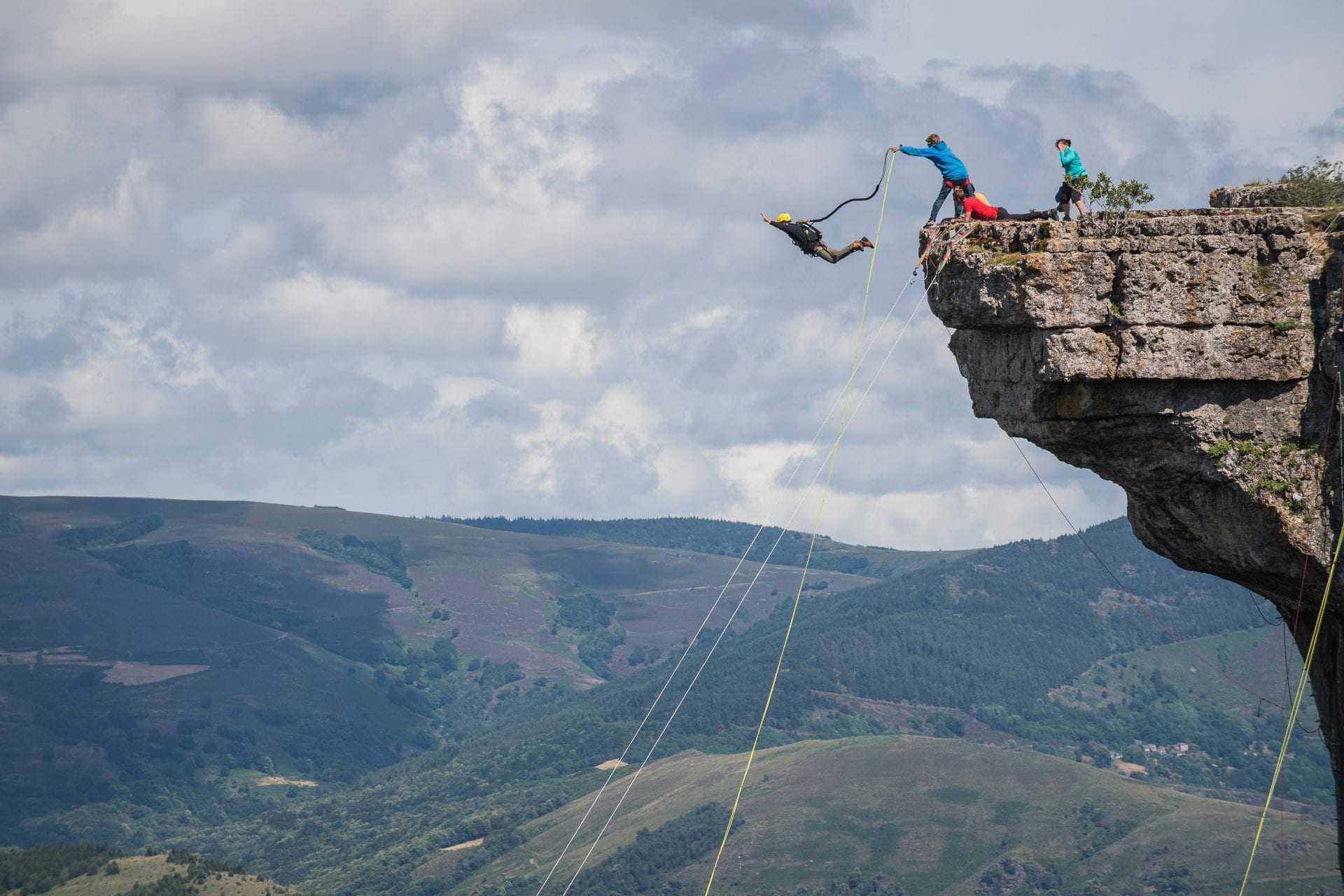
Fred Marie/ Art in All of Us/ Getty Images
In such cases, the accidents are much more severe and can even prove to be lethal. So, future bungee jumpers, please do your due diligence and check that the company you’ve elected to jump with is reputable and the gear isn’t frayed, old, and shoddy. If it is, this could happen…